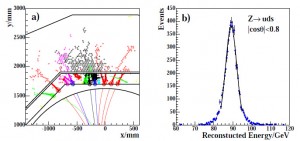
a) An example of particle flow reconstruction of a 100-GeV jet using the PandoraPFA algorithm. b) Distribution of the total reconstructed jet energy in the decay of Z to light quarks (up, down, strange) at a centre-of-mass energy of 91.2 GeV. Image courtesy of Mark Thomson
The familiar image of a collision event in a particle detector is a beautiful mess: Gossamer lines shoot and spiral every which way from a common point, revealing the paths of the post-collision projectiles. Unfortunately for particle tagging, the tracks almost always end in knotty energy clusters, leading physicists down trails that stop abruptly, unresolved, with a splat.
Matching each track to the right splat in the detector is the aim of the particle flow algorithm paradigm, or PFA, which is being developed for linear collider-type detectors. PFA helps scientists disentangle a collision’s energy deposits by dialing up the detector’s spatial resolution, bringing particle tracks into clearer focus. Simulations show that the method can resolve particle energies two to three times better than can current procedures.
“It’s a real tour de force to be able to measure an event with that kind of precision,” said SLAC’s Norman Graf, who leads the American Linear Collider Physics and Detector Simulations Working Group.
To achieve the kind of precision that would make PFA viable, scientists pushed at the traditional functional limits of the detector’s calorimeter.
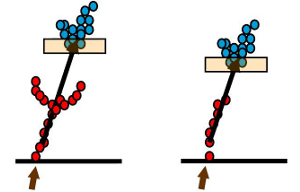
PandoraPFA topological reconstruction based on proximity (left) and direction of track segment (right). Image courtesy of John Marshall
“The idea of particle flow is to do something completely different,” said University of Cambridge’s Mark Thomson, convener of the ILD Detector Concept Analysis Working Group. “Effectively the idea is to measure as little energy as possible in the calorimeter and measure as much as possible and very precisely from the tracking chambers.” Tracking chambers, or trackers, show the initial path of a post-collision particle; calorimeters measure energy.
But in the PFA paradigm, the calorimeter gives an account, not of how much particle energy was deposited in a broad volume, as is typical, but of where the energy was deposited as a precise three-dimensional picture. This means developing a calorimeter with high granularity using many millions of small, centimetre-scale readout pads. With boosted spatial resolution, scientists could use the calorimeter like a map, zooming in close to pinpoint the location of energy splats, easing the separation of overlapping, messy clusters.
Calorimeter energy measurements tend to be relatively coarse, so the PFA paradigm shifts the responsibility for measuring charged-hadron energies inward to the core of the detector, the tracker. Trackers have much better resolution than calorimeters, and linear-collider types accurately measure particle momenta to one part in 10,000. The momenta measurements are then used to calculate the particles’ energies.
Now equipped with the resolution needed to sort clusters, scientists can follow each ultrafine track to its true terminus in the detector, reconstructing the particle path from initial collision to final demise. “We now know the energy of the particles that leave tracks perfectly, and are only left with those that don’t to measure in the calorimeters,” Thomson said.
Previously at the detectors at CERN’s LHC in Switzerland or Fermilab’s Tevatron in the US, on the rare occasion that a particle track led clearly to a specific energy cluster, scientists would take advantage of the association by using the track’s high-precision momentum measurement rather than the calorimeter’s much less precise energy deposit measurement. A protocol called energy flow was developed for CERN’s Large Electron-Positron collider ALEPH experiment in the 1980s and ‘90s. CERN’s ATLAS and CMS detectors and Fermilab’s CDF and D0 detectors at the Tevatron also developed versions of the approach.
“Now we’re taking that approach and designing a better calorimeter so that we can do this all the time and not just every once in a while,” Graf said.
Scientists are working on a number of approaches to PFA for individual particle reconstruction. Thomson and John Marshall at the University of Cambridge have been developing PandoraPFA. A group at the University of Iowa is also developing the Iowa PFA to reconstruct particle paths.
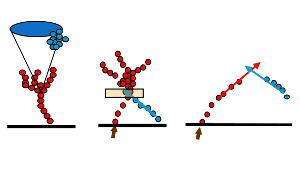
PandoraPFA topological reconstruction based on projected cone (left), backscatter patterns (middle) and looping tracks (right). Image courtesy of John Marshall
Reconstructions, of course, are never simple. Even with pixilated energy clusters, one still has to make judgment calls on which pixel to associate with which track. PFA contains more than 10,000 lines of C++ to recognise patterns and make sense of gaps, kinks, breaks, backscatters, showers, and loops in particle paths. It attempts to uniquely account for every piece of the clusters – no omissions, no over-counting – with a battery of techniques.
The techniques involve, for example, removing isolated hits or erring on the side of splitting up clusters that belong to a single track rather than aggregating clusters that may belong to more than one track. PFA puts various reconstructions through their paces until it hits on the right fit for a track-cluster association.
Extensive simulations have borne out PFA’s effectiveness: In the last few years the potential of PFA at the ILC has been conclusively demonstrated using the PandoraPFA approach.
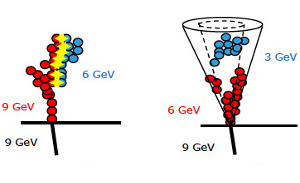
PandoraPFA fragment removal: layers in close contact (left), fraction of energy in cone (right). Image courtesy of John Marshall
“You can unambiguously associate a cluster in the calorimeter with a shower from a particle,” Graf said. Not only that, but you can also make the association with every single particle jet, yielding 100 percent efficiency in particle energy bookkeeping.
On the hardware side, the CALICE collaboration (Calorimeter for Linear Collider Experiment) develops high-granularity calorimeters for use with a particle flow algorithm, exposing the calorimeters to test beam to characterise their performance, data from which is used in simulations.
Though the PFA approach was developed for the ILC detectors, its application reaches further.
“It is definitely applicable to any collider environment,” Graf said. That includes the higher-collision-energy CLIC, for which PFA is also being developed.
“Initially I wasn’t convinced it would work at CLIC energies, because the particle densities seemed too high, but in the last year or so we have demonstrated it works rather well,” Thomson said.
“The possibility of designing a detector with this as its driving motivation appealed to me from early on,” Graf said. “Why wouldn’t you go with such a superb detector to do the best possible physics you can do in a precision environment?”

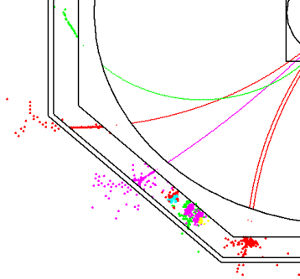
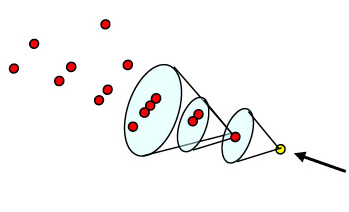
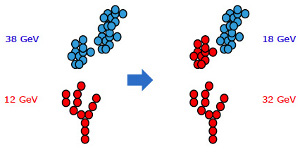
Recent Comments